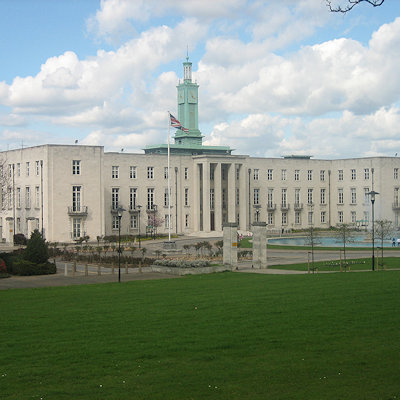
Like us on Facebook
PLACE NAMES


 
|
|
Walthamstow
|

|
|
|
Walthamstow is recorded c. 1075 as Wilcumestowe ("the Place of Welcome") and in the Domesday Book of 1086 as Wilcumestou.
King John visited Shern Hall (Shernhall Street) in 1213; the building survived until 1896. At one point Walthamstow was just a culmination of five small villages, and affairs were discussed at Vestry House, acting as the first town hall. In 1870 it had grown to the size of a small suburb and a town hall was built in Orford Road from which affairs of the village were run (which now takes place in Forest Road - since 1941). Until the 19th century it was largely rural, with a small village centre and a number of large estates.
The main route through the district was the aforementioned Hoe Street. Additionally, there were various smaller lanes, crossing the town. The road now known as Forest Road was originally called Clay Street.[5] Further south, the High Street was named Marsh Street, and led from the original settlement out to the marshes. Shernhall Street is an ancient route, as is Wood Street, to the east. In the 1660s Sir William Batten, Surveyor of the Navy, and his wife Elizabeth Woodcocke had a house here where, according to Samuel Pepys, they lived "like princes" and cultivated a vineyard.
Walthamstow Village conservation area is a peaceful and attractive district to the east of what has become the commercial centre of Walthamstow. The area is roughly defined as being south of Church Hill, west of Shernhall Street, north of Grove Road and east of Hoe Street. Orford Road is the main route through the district, though even this is a quiet thoroughfare by the standards of London. The village has a small selection of specialist shops, pubs and restaurants, and house prices tend to be higher in the streets of this neighbourhood. It was voted best urban village in London by Time Out magazine in 2004.
|
 Feel free to Email me any additions or corrections Feel free to Email me any additions or corrections
LINKS AVAILABLE TO YOUR SITE
| |





